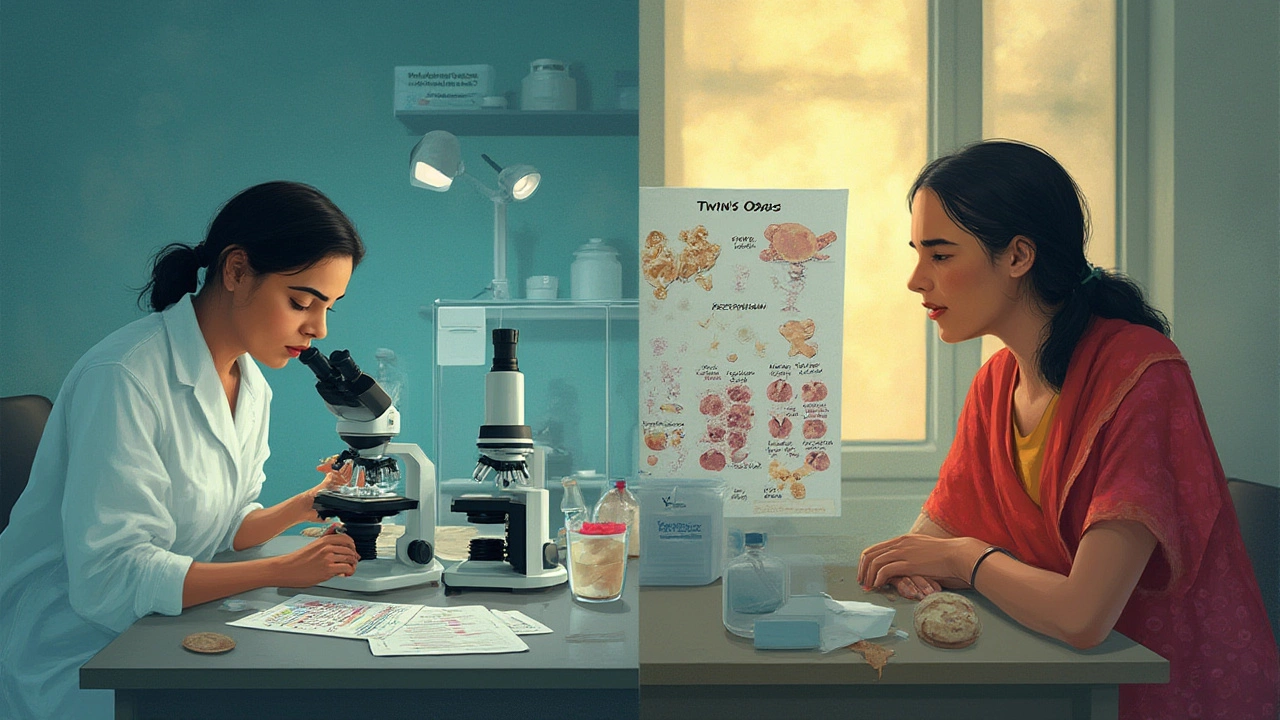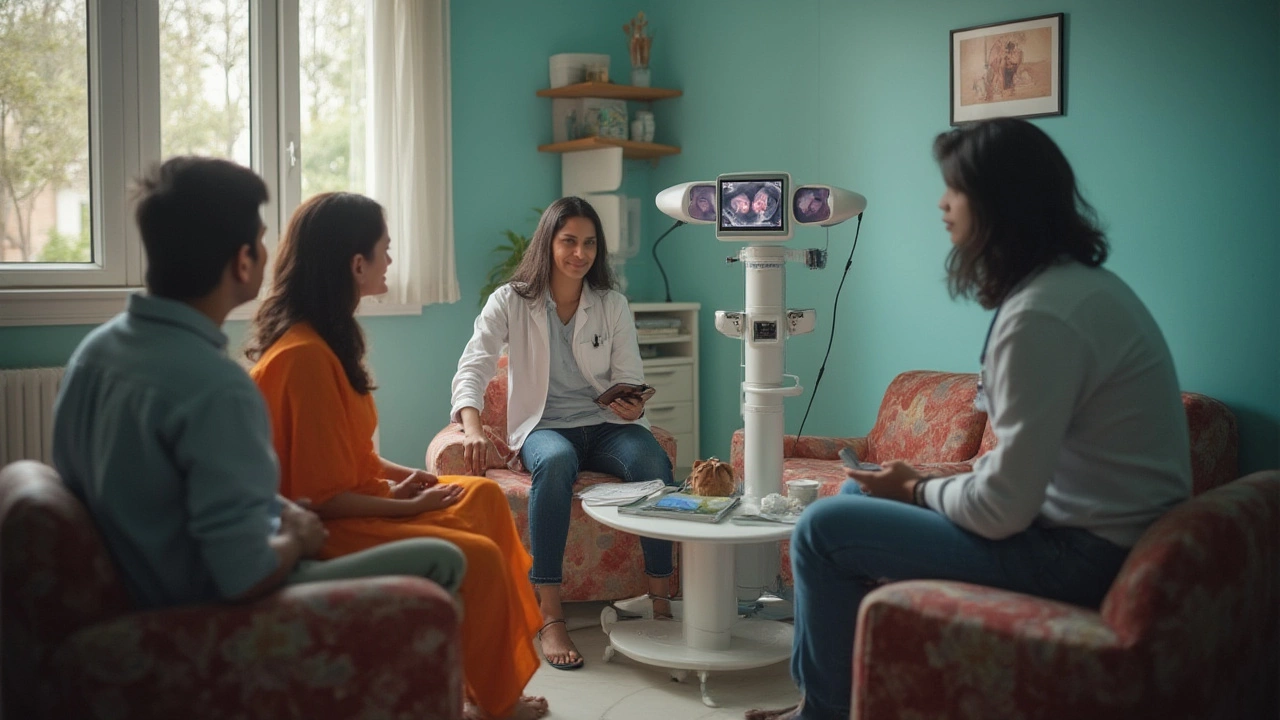Imagine browsing a pregnancy journey menu and seeing the ‘Twins, please!’ option listed alongside your favorite dessert. Sounds wild, right? In fact, lots of people—including some of my own friends—get this idea planted in their heads when they start talking to doctors about in vitro fertilization (IVF). The wish for twins is everywhere. Some folks dream of two babies at once: it seems efficient, adorable, and maybe even a little bit magical. But is it really as simple as walking into a clinic and picking your pair? Let’s pull back the curtain on what fertility science can actually deliver, and what remains out of your hands—no matter how long you stare at all those embryo photos in the lab.
The Real Science Behind IVF and Twin Pregnancies
First, let’s demystify how IVF works. During an IVF cycle, doctors typically stimulate the ovaries to produce multiple eggs at once, retrieve them, and then fertilize them with sperm in a lab dish. These tiny embryos are grown for a few days before being placed back into the uterus. This is where the twin question pops up: is it possible to just ask your doctor for twins? Here’s where the facts matter. Twin pregnancies mostly happen in IVF when two or more embryos are transferred into the uterus—and more than one successfully implants. But even if you transfer two embryos, you aren’t ordering twins with a side of fries. Only around 20-30% of double embryo transfers actually result in twins. Sometimes both embryos stick, but sometimes only one does. And, believe it or not, there are rare cases where a single embryo splits after transfer, giving identical twins—not something you can plan or control.
Why did doctors used to transfer multiple embryos in the past? IVF success rates were a lot lower a couple of decades ago, so putting in two, three, or even four embryos increased the odds that at least one would stick. Fast forward to 2025: IVF lab techniques are now so good that even single-embryo transfers often work. On top of that, big medical groups all around the globe—like the American Society for Reproductive Medicine—now recommend single embryo transfer, especially for younger women, to avoid the risks that come with multiples. In India and many other countries, fertility clinics have their own guidelines, but the trend is the same: minimize multiples, maximize safety.
The fascination with twins isn’t just a social thing. There’s something irresistible about the idea of two babies who share everything—womb, birthday, maybe even a secret language. In the U.S., about 3% of all live births involve twins, but in IVF clinics, the rate was much higher a decade ago—sometimes upwards of 40% with aggressive embryo transfer policies. Now, strict regulations and smarter protocols have dropped those rates. Clinics worry, with good reason: twin pregnancies are way riskier than singleton ones. Preterm labor, gestational diabetes, high blood pressure, low birth weight—it’s a laundry list of complications nobody wants to face if they can avoid it. If you still think twins are a done deal with IVF, just visit the neonatal intensive care unit (NICU) on a busy day. You’ll see what those extra risks really look like in real life.
So, can you pick twins with IVF? Well, you can talk to your doctor about transferring more than one embryo—but no reputable doctor will ‘guarantee’ twins. Even then, a twin pregnancy isn’t a vending machine result. Biology still has the final say. Each family’s situation is different, and your doctor will weigh things like maternal age, embryo quality, and medical history before suggesting how many embryos to transfer. The options might be different if you’ve had repeated IVF failures, or if both partners are older. But nobody can guarantee a twin pregnancy in the way you might order a pizza with double cheese. If only it were that easy!

Is Choosing to Have Twins a Good Idea? Risks and Considerations
Alright—now that the genie’s out of the bottle, let’s get real about whether you should even try for twins with IVF. Picture this: when Isha and I started exploring fertility treatments, neither of us was ready for the deep, honest conversations about what bringing home twins could mean. For lots of families, the dream looks adorable—matching onesies, double strollers, those viral videos where twin babies giggle at each other. But it’s not all cute Instagram moments. Twin pregnancies crank up the risks, for moms and babies alike.
Let’s talk numbers. A single-baby pregnancy already puts stress on the body. With two, everything doubles—nausea, back pain, exhaustion, doctor’s visits, and the likelihood of needing a C-section. Twins are far more likely to arrive early. Preterm birth rates for twins? Nearly 60%. That means your babies could be in NICU, facing breathing problems or feeding issues. There’s also a greater risk of conditions like preeclampsia and gestational diabetes for moms. In the worst cases, twin pregnancies can be dangerous or even life-threatening. That’s not to scare you, but modern fertility experts really hate seeing patients get blindsided by the tough parts. If you want the healthiest outcome, transferring one high-quality embryo is usually the best bet.
There’s another layer: the emotional and financial wallop. Overnight, you go from zero to sixty. Double diapers, double feedings, double everything. Some families manage beautifully, but sleep is a distant memory for months. The IVF process itself isn’t cheap, and NICU stays or extra medical care just add to the bills. In real-world numbers, caring for twins costs about $2,000 to $7,000 more in the first year according to surveys in the U.S. and Europe. That doesn’t even count extra childcare, time off work, or mental health ups and downs parents often report.
On the bright side, if you do have twins, there are upsides. Siblings grow up together, often sharing their milestones—first steps, first words, friendships built right from the crib. Many parents say the joy outweighs the challenges. But the fact remains: modern medicine doesn’t recommend actively aiming for twins anymore. Not just for your body’s sake, but for your future babies too. Even in India, where twins used to be more common with IVF, new rules and better tech are shifting things toward singleton pregnancies. The end goal, doctors say, is one healthy baby at a time.
A few clinics still offer “twin package deals,” often targeting overseas couples. But it’s worth asking: do these places truly have your health at heart, or are they selling you a shortcut without warning you of the risks? If your doctor seems eager to promise twins without explaining the dangers, raise your eyebrows. You need all the facts on the table. Transparency and your own safety are non-negotiable. When Isha and I faced difficult choices, our trusted clinic spelled out every risk honestly. That’s the service everyone deserves when weighing such a life-changing decision.

Tips for IVF Success and Making the Right Choice for Your Family
If you’re still considering IVF and have twins on your mind, here’s what seasoned parents, doctors, and fertility counselors recommend.
- Talk with your doctor about your specific situation—don’t just ask for twins outright. Each case is different. If you have a history of failed IVF, are older, or have other fertility challenges, your doctor might agree to transfer two embryos after weighing the risks. But don’t expect a guarantee.
- Get the facts about embryo quality and genetic testing. Advances in pre-implantation genetic testing (PGT) can help find the strongest embryos, improving single embryo transfer results. Some clinics show off sky-high twin rates as a sign of success, but better clinics focus on single, healthy births.
- If you do transfer two embryos, ask about selective reduction risks and procedures. If both stick and one pregnancy causes extra risk, doctors sometimes recommend reducing to a singleton—a seriously tough decision that’s not to be taken lightly.
- Consider the financial and logistical reality—can you manage twins physically, emotionally, and economically? It’s a question worth asking before starting the process. Join online forums or parent groups and talk to real twin parents about their day-to-day lives.
- Read up on the newest research: studies from 2022–2025 keep showing that single embryo transfers now have live birth rates rivaling those of dual-embryo transfer, without the risks. Europe and Australia are leading the charge on single embryo guidelines, and most top clinics are following suit.
To sum it up—while it’s tempting to try and pick twins with IVF, the science doesn’t quite let you “choose” in the way you might wish. That element of surprise is both the beauty and frustration of working with biology. Modern IVF success means one strong embryo, one happy and healthy birth. If twins do come, it’s a bonus most doctors now try to avoid for safety’s sake. At the end of the day, you want your little one—whether one or two—home, safe, and smiling. And trust me, when Isha and I first held our baby after all those months of hoping, I stopped thinking about numbers or symmetry. I just felt lucky, plain and simple.
